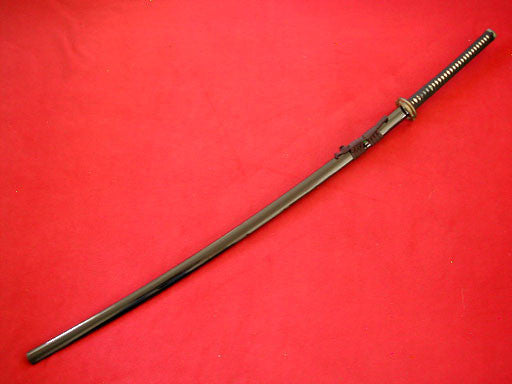Tu carrito está vacío


Also known as the nodachi,the ōdachi is a traditional Japanese sword worn by Samurai warriors of the nation's feudal class.
Ōdachi: What Does it Mean?
Let's first look at the name ōdachi and its meaning. The ō translates to "big" or "great," while the dachi is the same as tachi, meaning "sword." Combining the two reveals a translation of "big sword," which is an accurate representation of the ōdachi.
Design and Specifications
While Japan swordsmiths didn't craft the ōdachi using exact size definitions, most featured a blade length of approximately 3 shaku (36.79 inches). It was significantly In comparison, a traditional Japanese katana featured a blade length of approximately 23-28 inches. So, for what purposes did this incredibly large and heavy offer?
Purposes
Historians believe the ōdachi has two primary purposes:
For militaristic purposes, the ōdachi was too long for samurai warriors to carry on their waist. As such, they would either carry it on their back or carry it sheathed in their hand. Fast forward to the Muromachi era, however, and samurai warriors began using a follower to help them carry and draw it.
Production
Being that the ōdachi features such as a large blade, it wasn't as easy to forge as a standard-length sword like the katana. Long-bladed swords require more complex heat treatment methods to maintain a similar temperature throughout the metal. If one section of the blade is heated more than a different section, it can result in a warped blade that's more susceptible to breaking.
To promote an even temperature throughout the metal, Japanese swordsmiths would use a greater amount of water when quenching the blade. By quenching the blade with an excess amount of water, the metal's temperature was reduced more evenly and without disruption. Additionally, the ōdachi was polished by hanging the sword rather than gliding it across a polishing stone.
Following the Seige of of Osaka (1615), the ōdachi's popularity began to decline. This was due primarily to the fact that the new government restricted swords to certain blade lengths. To comply with this new nation-wide law, swordsmiths were forced to make the ōdachi shorter, eliminating the key advantage it once had over other traditional Japanese swords.
Are you interested in an o-dachi? We can build you an o-dachi with up to 36 inches blade lengths. Please check our custom sword builder.